News
News list
-

Looking into the past to unravel the mystery of Pamir glaciers
In the Pamir Mountains of Tajikistan, certain glaciers have been resilient to climate change in recent decades – in sharp contrast to those in the rest of the world. Evan Miles and Andreas Henz, glaciologists at the Department of Geography, took part in an international team to collect two ice cores at an altitude of over 5,800 meters in order to understand this phenomenon.
-
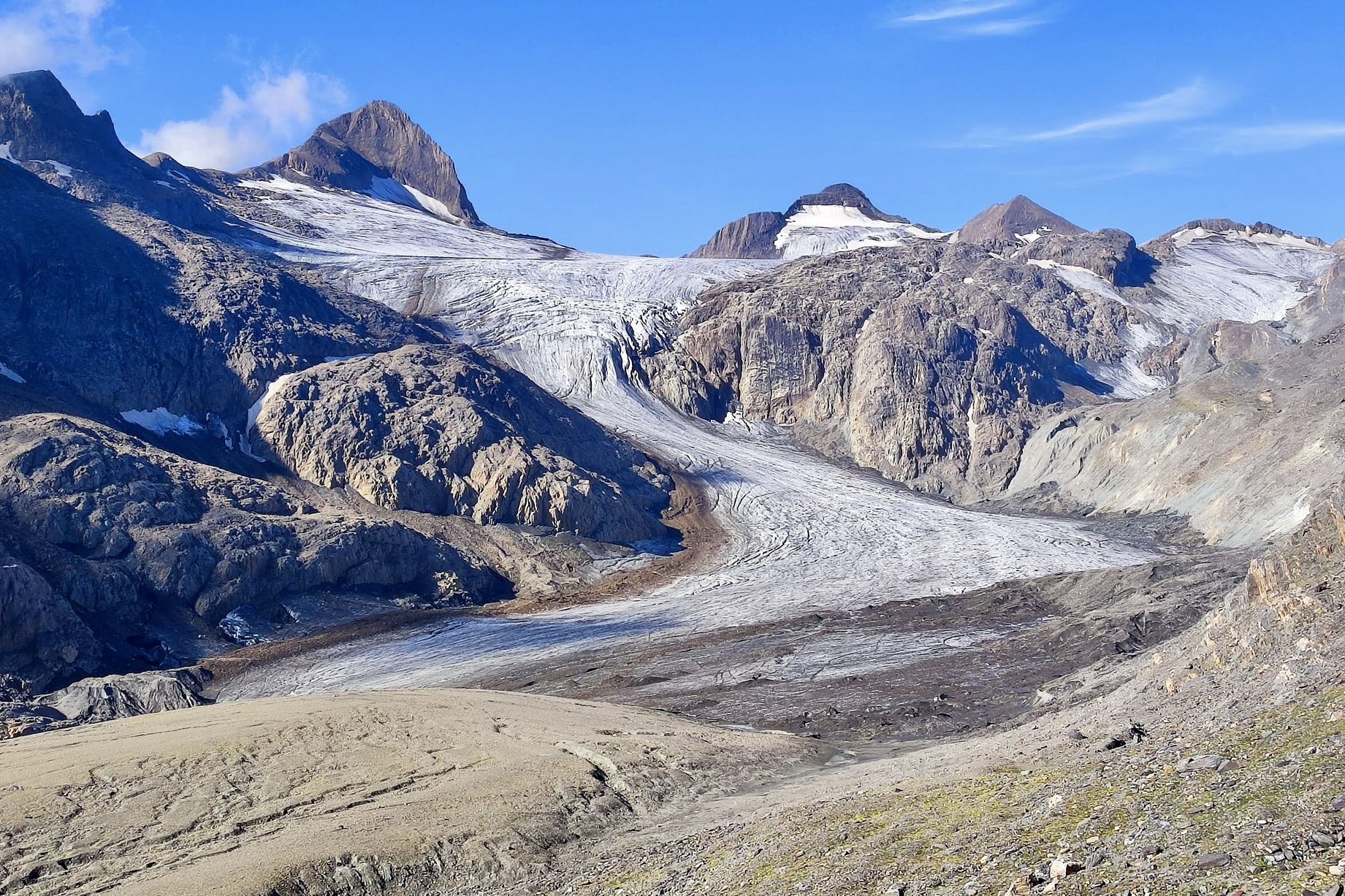
And Swiss glaciers continue to melt
Glacial melting in Switzerland was once again enormous in 2025. A winter with low snow depth combined with heat waves in June and August led to a loss of three per cent of the glacier volume. This is the fourth largest level of shrinkage since measurements began. Consequently, the ice mass reduced by one quarter in the last ten years.
-

Falling Ice Drives Glacial Retreat in Greenland
When an iceberg calves, huge chunks of ice break off at the end of the glacier. These trigger high waves on the surface and underwater, pushing warmer sea water upwards. This accelerates the melting of the ice masses, as glaciologists from GIUZ have shown in collaboration with an international research team.
-
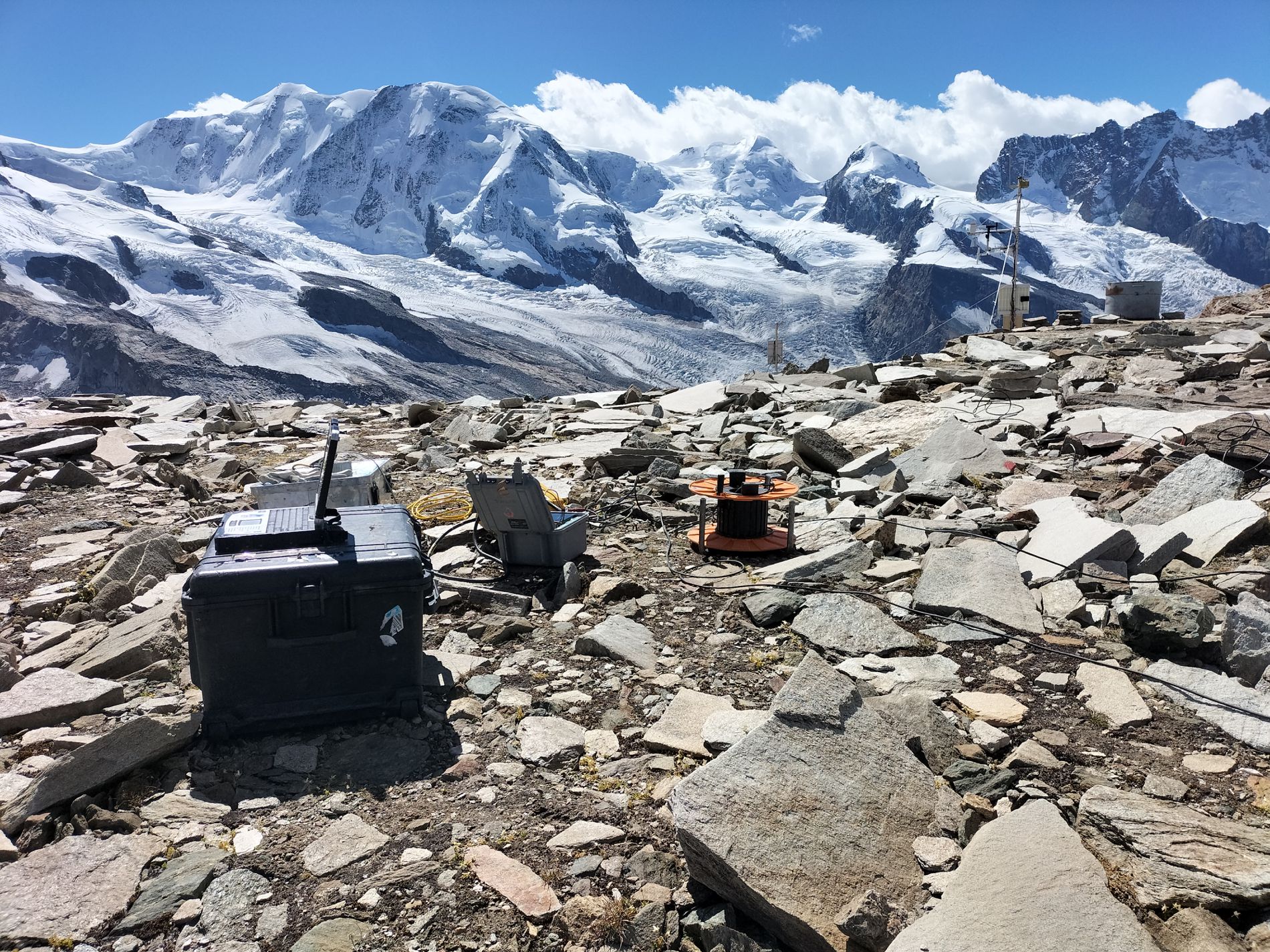
Permafrost in den Schweizer Alpen: 2024 war ein weiteres Rekordjahr
Der Permafrost in den Schweizer Alpen war noch nie so warm wie im hydrologischen Jahr 2024. Auch der Rückgang des Bodeneisgehalts und die Zunahme der Blockgletschergeschwindigkeiten setzten sich weiter fort. Diese Beobachtungen beruhen auf 25 Jahren koordinierter Messungen im Rahmen des Schweizerischen Permafrostbeobachtungsnetzes PERMOS. In diesem Zeitraum haben sich die Permafrostveränderungen in den Schweizer Alpen beschleunigt.
-

European State of the Climate 2024
The report provides a summary of the climate in Europe, in the Arctic, and globally, based on authoritative data sources compiled by institutions across Europe. The World Glacier Monitoring Service (WGMS) and the Glaciology and Geomorphodynamics Group at GIUZ contributed glacier data and analyses.
-
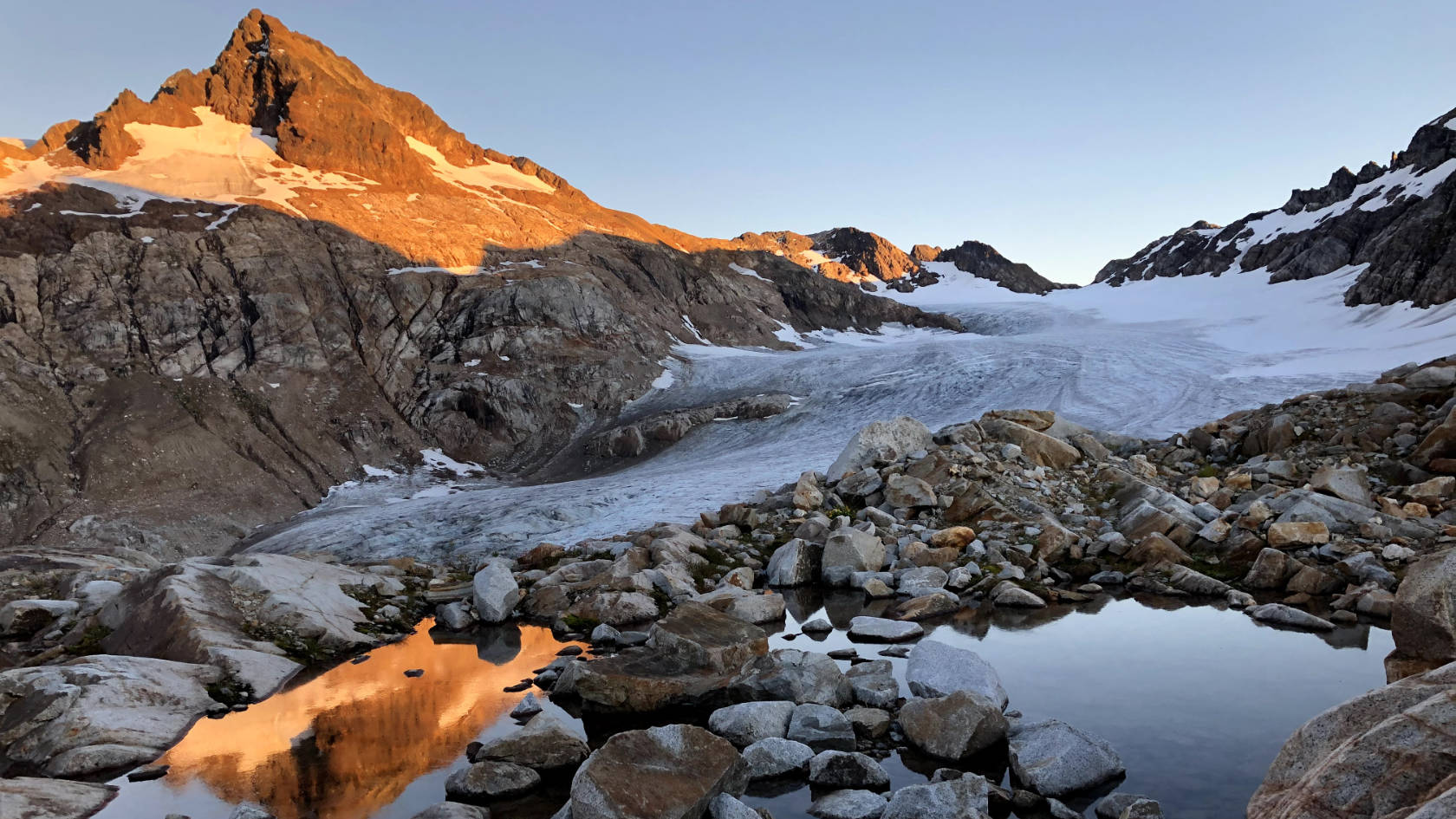
Every tenth of a degree counts
The United Nations proclaimed 2025 as the International Year of Glaciers’ Preservation and established 21 March as the annual World Day for Glaciers to sound the alarm that accelerating glacier melt risks unleashing an avalanche of cascading impacts on economies, ecosystems and communities. Several UZH glaciologists are significantly involved in the underlying research and participate in various international and national events.
-

Severe melting of glaciers despite heavy snowfall at high altitudes
After the extreme circumstances encountered in 2022 and 2023, no relief is in sight for Swiss glaciers. Despite exceptionally large volumes of snow during the winter, a combination of temperatures in July and August that at times reached record levels and dust from the Sahara resulted in a loss of 2.5% of the glacier volume.
-
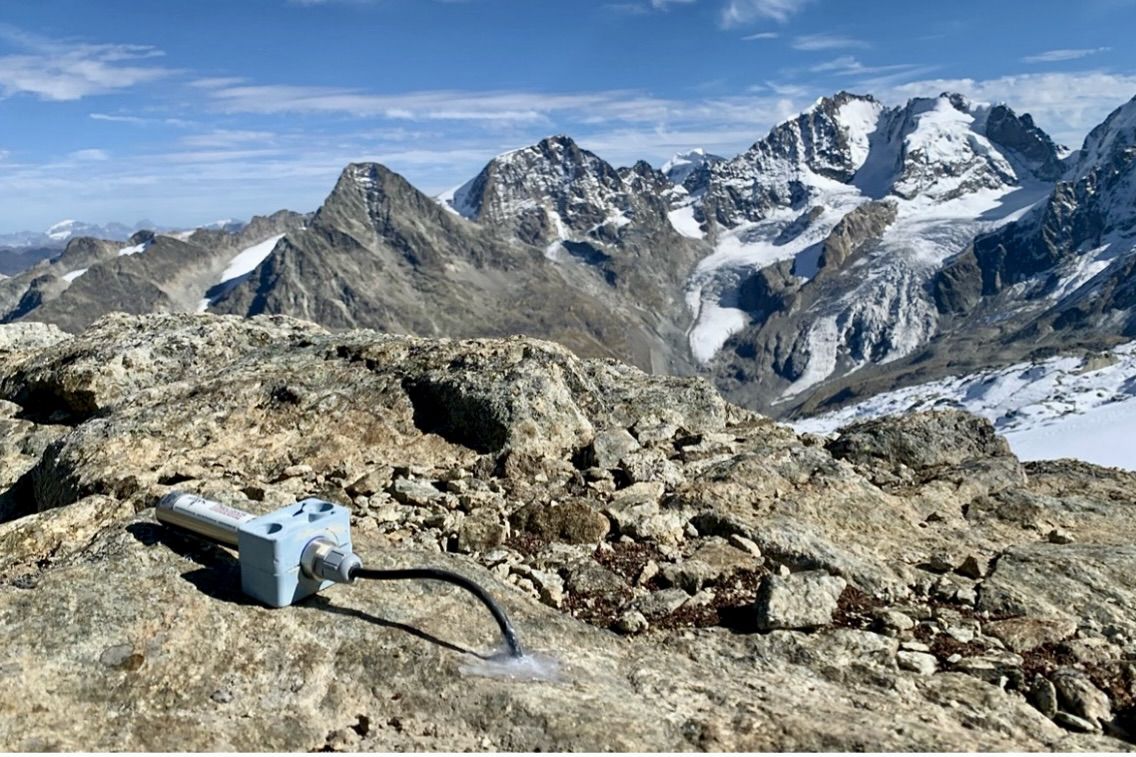
Keine Erholung für den Permafrost in der Schweiz
Nach zwei Jahren mit wenig Schnee und sehr heissen Sommern bleibt der Permafrost in der Schweiz im Herbst 2023 warm und der Eisgehalt des Bodens nahm vielerorts weiter ab. Die Blockgletscher bewegten sich zudem schnell talwärts. Dies geht aus den neuesten Messungen des Schweizer Permafrost-Messnetzes hervor.
-
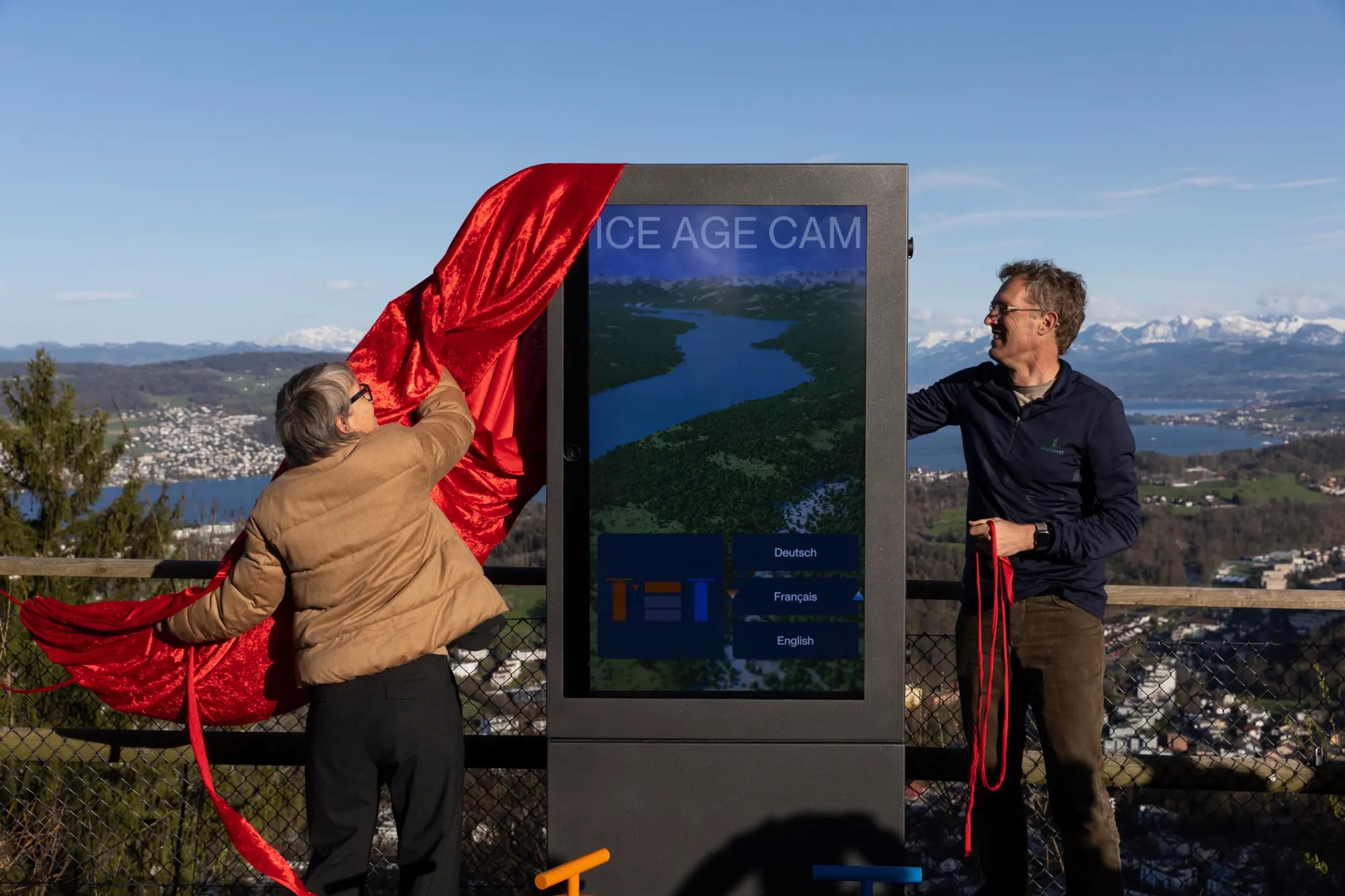
Auf der Felsenegg Eiszeiten und Klimawandel erleben
Die neue Installation «IceAgeCam» auf der Felsenegg demonstriert eindrücklich den menschlichen Einfluss auf den Klimawandel. Sie lädt Besucher:innen dazu ein, eiszeitliche Landschaften und die damit verbundenen Veränderungen interaktiv zu erleben.
-
Greenland, on the edge of a melting world
In Greenland, climate change has far-reaching consequences for glaciers, vegetation, biodiversity and especially for the population. Two journalists accompanied researchers from the interdisciplinary GreenFjord project to the front of the Qajuttap glacier, among other places. Glaciologists from the GIUZ are investigating the calving of the glacier there.
-
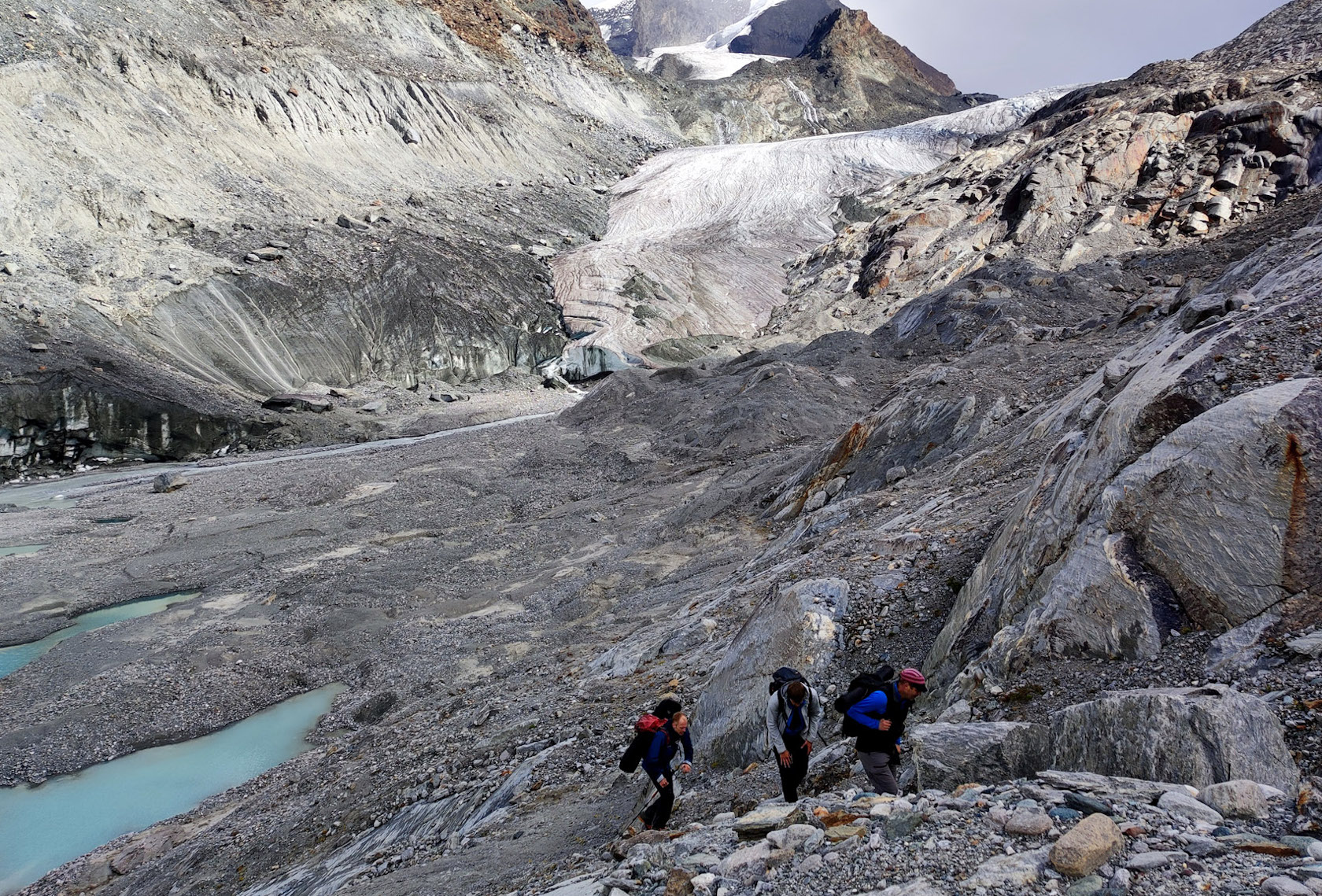
Two catastrophic years obliterate 10% of Swiss glacier volume
One extreme year follows another. Glaciers in Switzerland lost 6% of their volume in 2022. However, 2023 saw 4% destroyed, representing the second largest decline since measurements began. The Swiss Commission for Cryosphere Observation of the Swiss Academy of Sciences reported that a total of 10% of the ice volume disappeared in only two years.
-
Greenlandic fjord ecosystems in a changing climate: Socio-cultural and environmental interactions
Within the cryosphere cluster of the GreenFjord project, GIUZ researchers investigate processes of glacier calving and iceberg export, as well as the resulting hydro-dynamics and nutrient fluxes in the fjord.
-
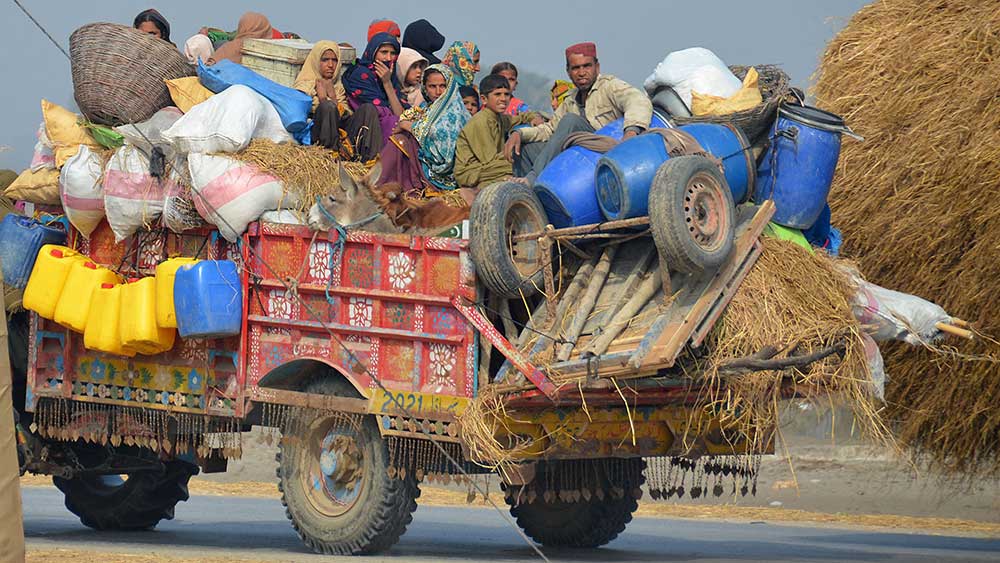
Fleeing climate disasters
Climate change is expected to become one of the main reasons for migration in the future. And the poorest will be hit hardest. Christian Huggel and Maria J. Santos analyze which regions are particularly under threat and how to best manage mass relocations.
-
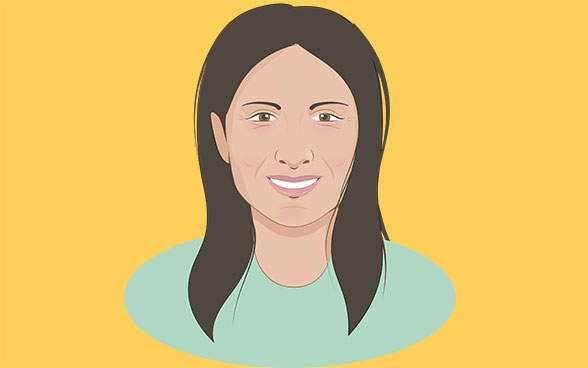
«Wir wiegen uns in falscher Sicherheit»
Veruska Muccione, Klimawissenschaftlerin an der UZH und Leitautorin des sechsten UNO-Klimaberichts, spricht über die Folgen des Klimawandels in der Schweiz, mangelndes Problembewusstsein und darüber, was sie trotz allem hoffnungsvoll macht.
-

Ehre für die Engadiner Blockgletscher – und für die Permafrostforschung
Die Engadiner Blockgletscher sind neu geologisches Welterbe und damit eine von 100 erdwissenschaftlich besonders bedeutsamen Stätten. «Das ist eine Auszeichnung für alle, die an Blockgletschern arbeiten», sagte Isabelle Gärtner-Roer in der SRF Tagesschau.
-
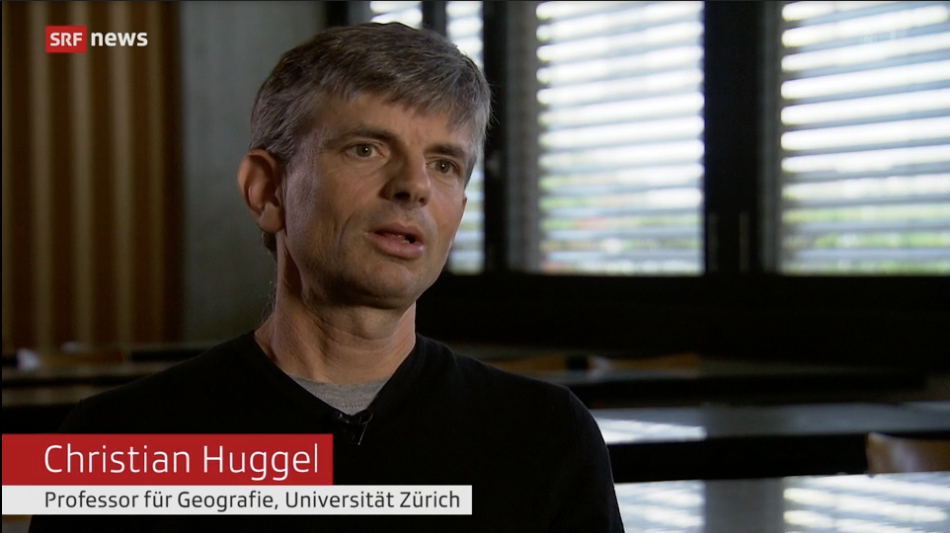
Klimakonferenz COP27: Wer bezahlt die Folgen von Klimaschäden?
«Loss and damage», also Verluste und Schäden stehen im Zentrum der 27. UNO-Klimakonferenz. Werden sich die Industrienationen grosszügig zeigen? Die Mutter aller Probleme der COP sei die Gerechtigkeit, sagt Christian Huggel im Gespräch mit SRF News.
-
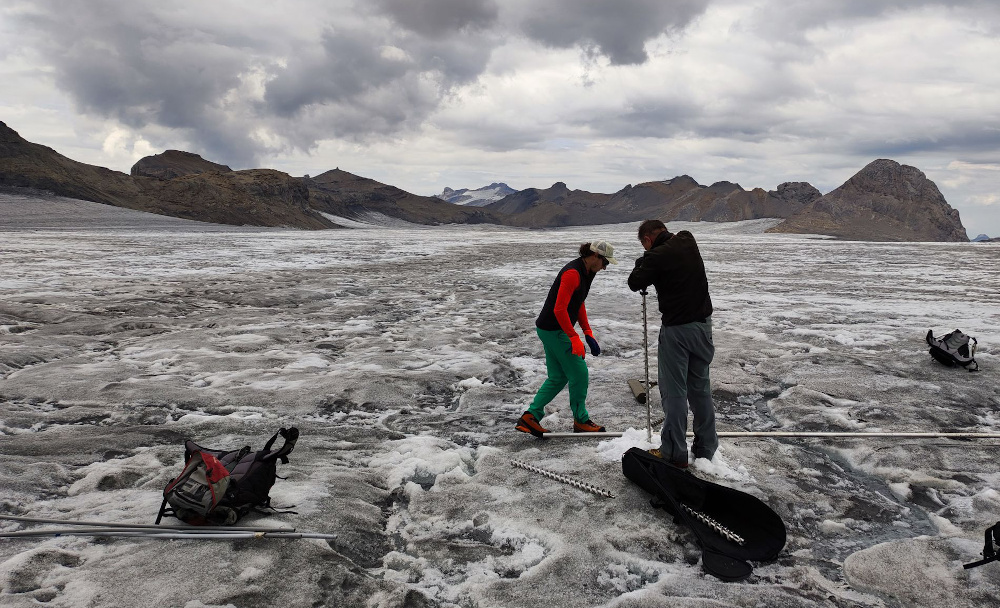
Worse than 2003: Swiss glaciers are melting more than ever before
2022 was a disastrous year for Swiss glaciers: all ice melt records were smashed by the great dearth of snow in winter and continuous heatwaves in summer. More than 6 percent of the ice volume was lost, reports the Swiss Glacier Monitoring Network (GLAMOS), in which UZH is also involved.
-
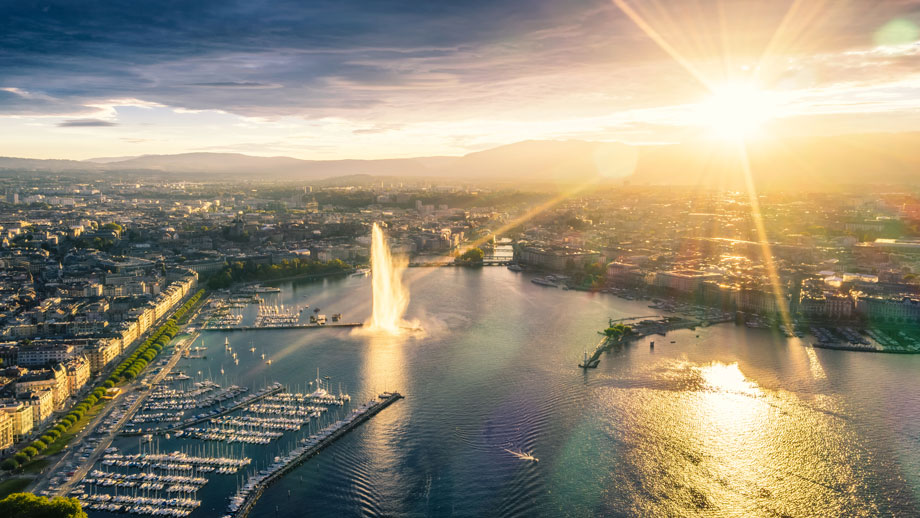
Longer, Hotter and More Frequent Heat Waves in Swiss Cities
Hot days followed by sweltering nights without any temperature relief in between might become a new norm towards the end of the 21st century. Researchers from the Department of Geography have analyzed the frequency, intensity and length of such extreme events for five Swiss cities.
-

Extreme Heat and Drought Events Require More Systematic Risk Assessment
Simultaneous extreme heat and drought events have consequences in a variety of areas – for example the economy, health and food production. In addition, due to complex socio-economic connections, such extreme events can cause knock-on effects, researchers at the Departement of Geography have shown. More systematic risk assessments are needed to make affected regions more resilient.
-
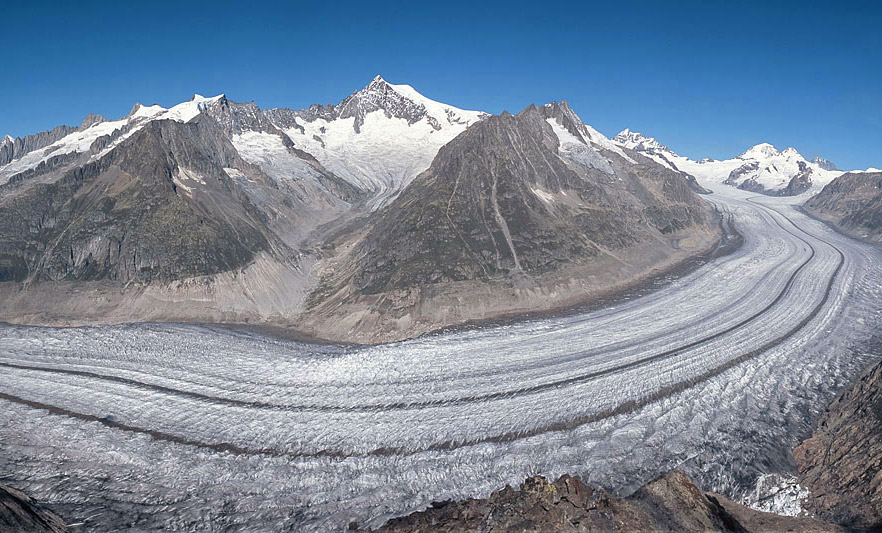
WGMS Letter of Concern to COP25
Glacier-mass changes are a reliable indicator of climate change. The worldwide network of glacier observers urges parties to the United Nations Framework Convention on Climate Change to boost international cooperation in monitoring these changes, and to include the results in the Paris agreement’s global stocktake.
-
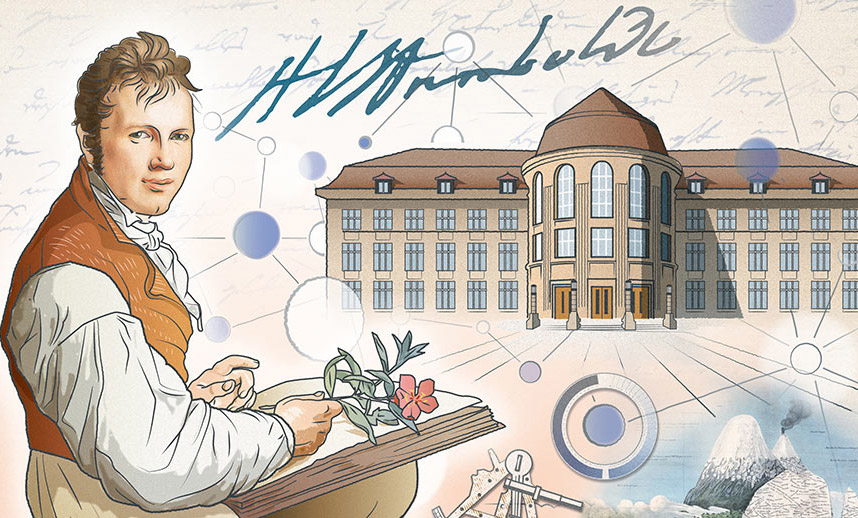
Alexander von Humboldt: Trailblazer of Science
Historical role model, ideal-typical scientist, courageous expedition leader: five UZH researchers tell why they value Alexander von Humboldt as a person and researcher and how relevant his findings are to this day.
-
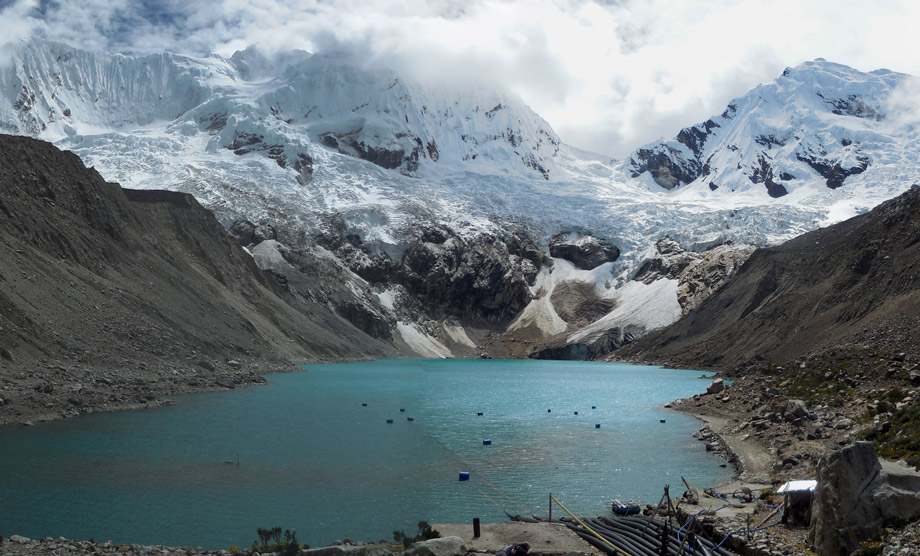
The world's highest mountains hold vital climate change lessons
Glaciologist Christian Huggel talks to swissinfo.ch about the effects of the climate crisis on high mountain regions, lessons learned between affected countries and the physical and existential impacts of melting glaciers on locals.
-
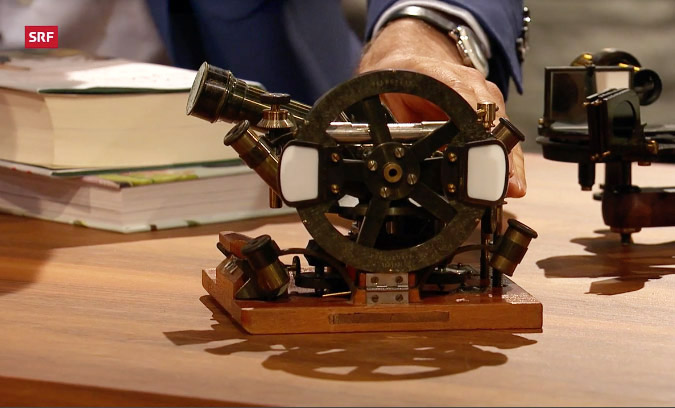
GIUZ treasures on Swiss television
Measuring instruments of the Swiss Arctic researcher Alfred de Quervain are among the historical treasures of GIUZ. They were featured in the "Sternstunde Philosophie" on Swiss television.
-
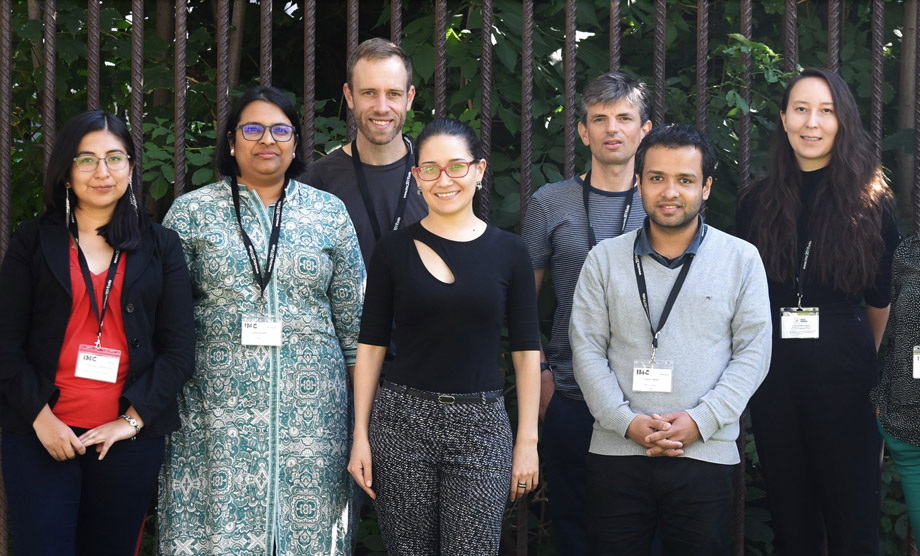
Local experts for global reports
Climate change and its consequences pose even greater challenges to developing countries than industrialized countries. But these countries are severely underrepresented in bodies assessing the relevant science. A training program for early career researchers at GIUZ takes counteraction.
-
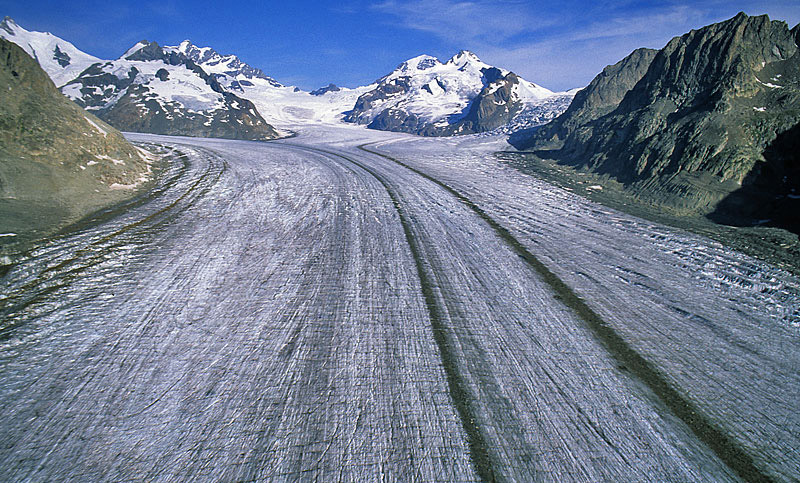
1894–2019: 125 years of internationally coordinated glacier monitoring
The 125 year jubilee of the World Glacier Monitoring Service (WGMS), located at the Department of Geography, attracted considerable media attention.
-
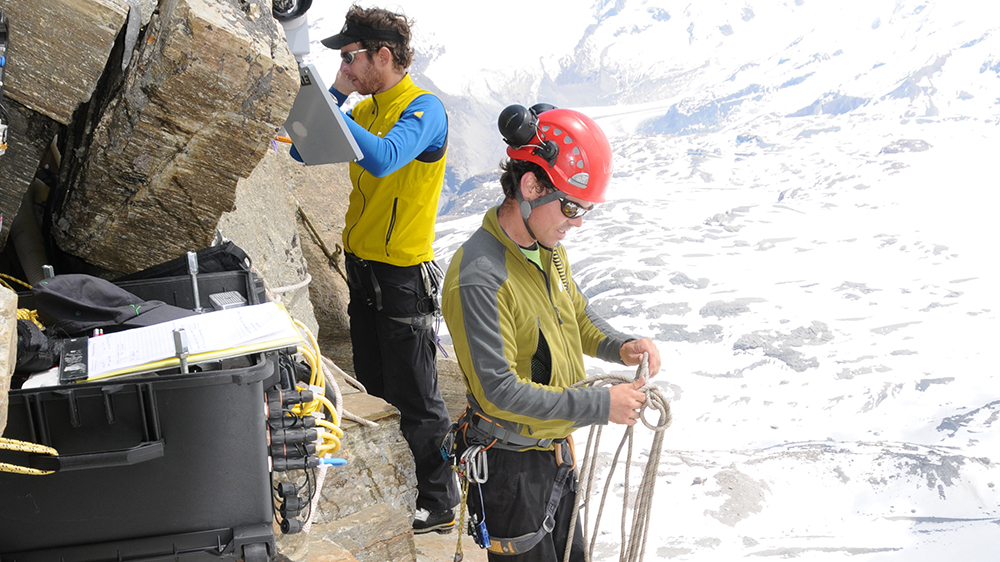
Monitoring the Matterhorn with Millions of Data Points
A unique project is linking in-situ measurements with natural hazards research. For the past ten years, a network of wireless sensors on the Matterhorn’s Hörnli ridge has been constantly streaming measurement data on the condition of steep rock faces, permafrost and prevailing climate.
-
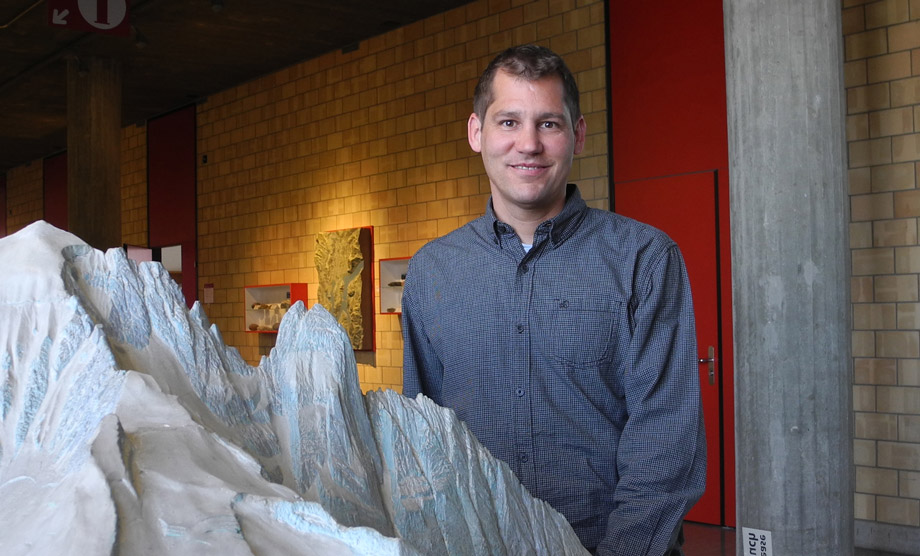
Reise bis zum Ende der Eiszeit
Andreas Linsbauer untersucht, wie schnell die Schweizer Gletscher schmelzen. Mit einem 3-D-Erlebnis will er die Menschen aufrütteln.
-

Träge Zungen
Auch wenn Gletscher mit einer gewissen Verzögerung auf die Klimaerwärmung reagieren: Die Schweiz wird sich auf eine Zukunft ohne die imposanten Eiszungen einstellen müssen. Das wird ihr gelingen. Grösser seien die Herausforderungen für asiatische Länder, sagt Andreas Linsbauer.
-
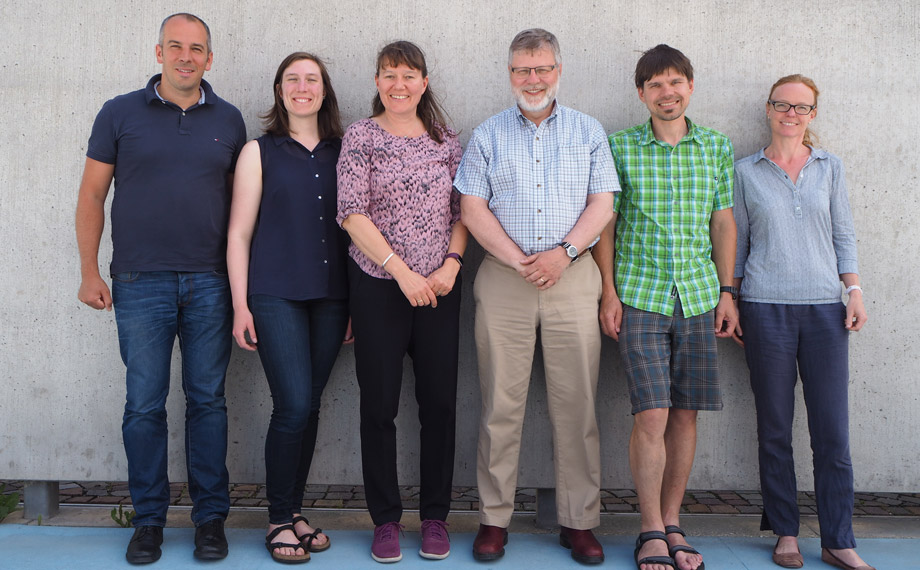
Fostering permafrost research and scientific exchange
The Executive Committee of the International Permafrost Association (IPA) met on June 17 at GIUZ for a one-day strategy meeting. Dr. Isabelle Gärtner-Roer serves as Vice-President of IPA.
-

Klimaindikator Gletscher
Rai Südtirol hat das World Glacier Monitoring Service (WGMS) besucht, eine Hochburg der internationalen Gletscherforschung, und die Arbeit von Philipp Rastner und Holger Frey dokumentiert.
-
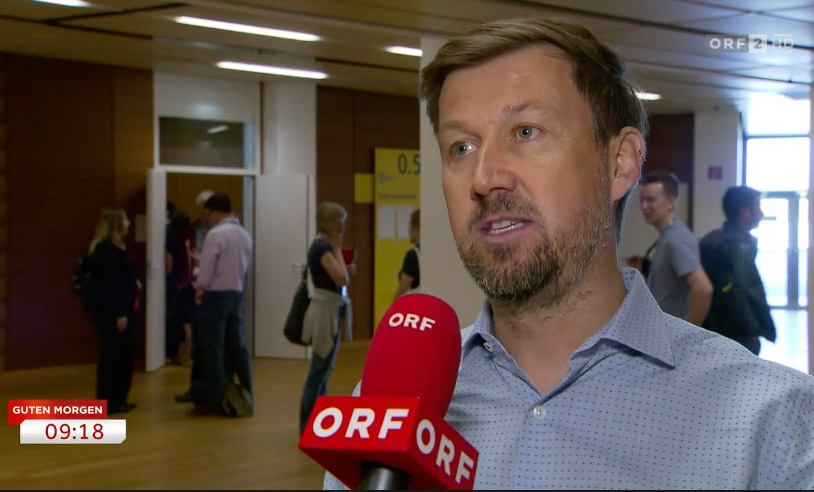
Global warming is shrinking glaciers faster than thought
The study recently published in "Nature" by an international research team led by Michael Zemp, director of the World Glacier Monitoring Service at the Department of Geography, generated a large media response worldwide.
-
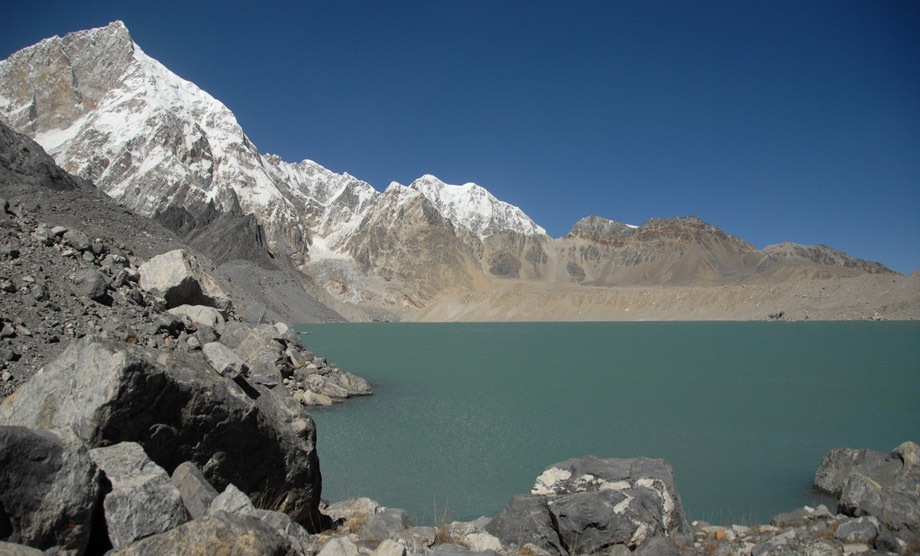
Dangerous glacial lakes across Tibetan Plateau
The flood danger posed by glacial lakes across the Tibetan Plateau has been assessed in the most comprehensive study of its kind so far. Simon Allen, member of the international research team, was interviewed by BBC.
-
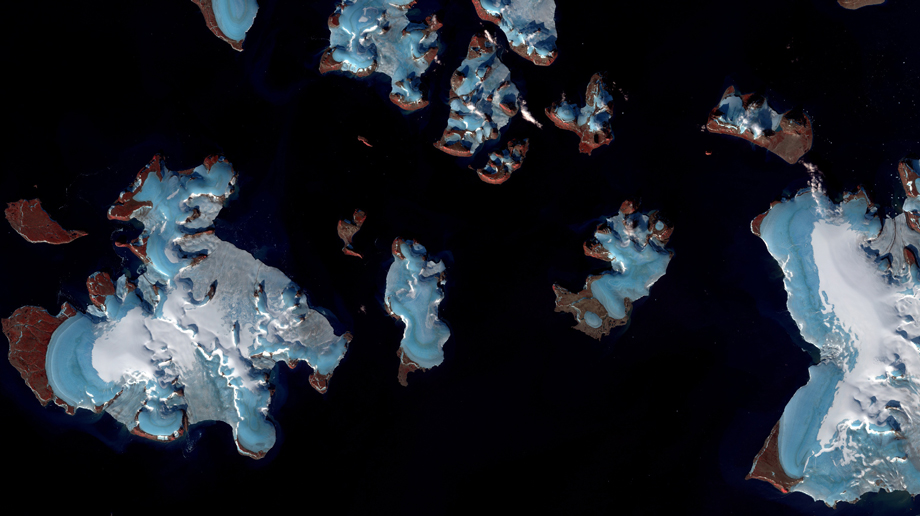
Melting glaciers causing sea levels to rise at ever greater rates
Melting ice sheets in Greenland and the Antarctic as well as ice melt from glaciers all over the world are causing sea levels to rise. Glaciers alone lost more than 9,000 billion tons of ice since 1961, raising water levels by 27 millimeters, an international research team under the lead of UZH have now found.
-
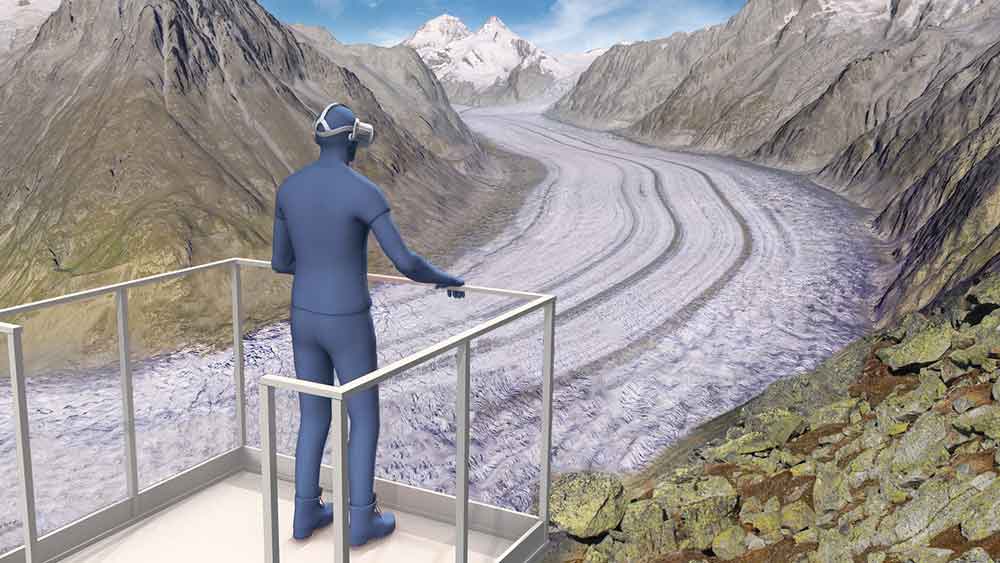
Den globalen Zusammenhang vermitteln
Umweltthemen zielgruppengerecht vermitteln, das macht Andreas Linsbauer als Ausbildner zukünftiger Lehrpersonen und als Wissenschaftler am Geographischen Institut. Heute wird die von ihm geleitete Ausstellung «Expedition 2 Grad» im Nationalparkzentrum Zernez eröffnet.
-
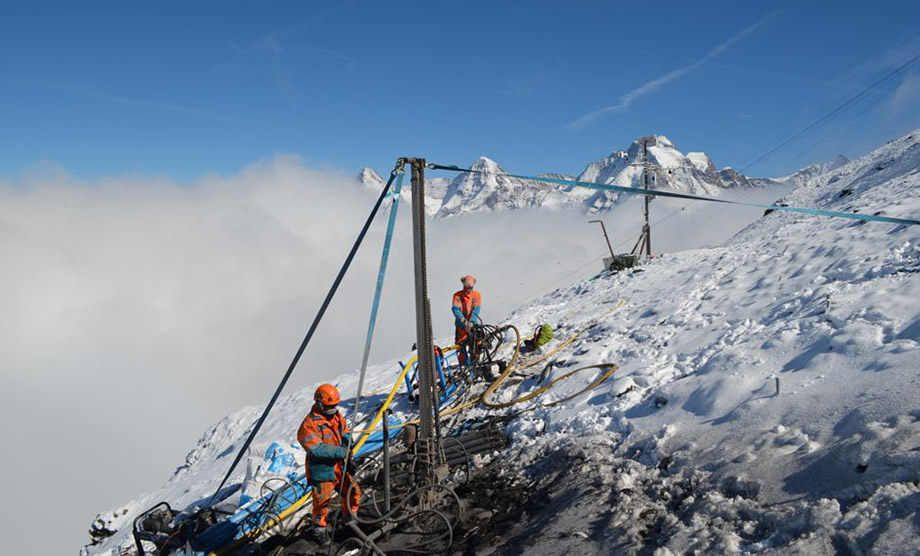
Der Permafrost in der Schweiz erwärmt sich wieder
Nach einer kurzen Pause von ein bis zwei Jahren setzte sich die Erwärmung des alpinen Permafrostes im hydrologischen Jahr 2017/18 wieder fort. Das zeigen die neusten Messungen des Schweizer Permafrostmessnetzes PERMOS. Das Geographische Institut ist einer der sechs Partner des Messnetzes.
-
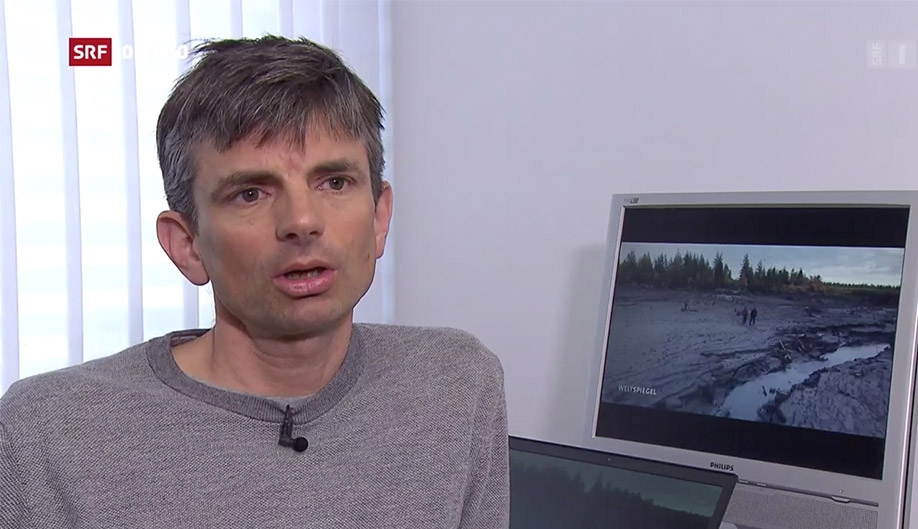
Tauender Permafrost: Eine tickende Zeitbombe
Über Jahrtausende hinweg war die Erde in der russischen Taiga gefroren. Doch jetzt taut der Untergrund aufgrund der Klimaerwärmung. Die Auswirkungen sind massiv, auch auf die Menschen und ihre Lebensgrundlage, erklärt Christian Huggel vom Geographischen Institut.
-

Panta rhei - everything flows
In high alpine regions, ice keeps loose debris masses together. Alessandro Cicoira computes the influence of climate on rock glaciers as part of his PhD thesis.
-

Mountain glaciers: Vanishing sources of water and life
For the purpose of the UN Climate Conference (COP24) this week in Katowice, Poland, a team of scientists from various institutions - including GIUZ resarchers Christian Huggel and Samuel Nussbaumer - developed a communication campaign on the effects of shrinking glaciers on ecosystems, people and economy.
-

Boost to UZH’s Climate Research
Thanks to its far-reaching and interdisciplinary research and teaching in the area of climate change, UZH has been chosen as a climate action hub. This distinction is awarded by the United Nations Academic Impact on the occasion of United Nations Day.
-
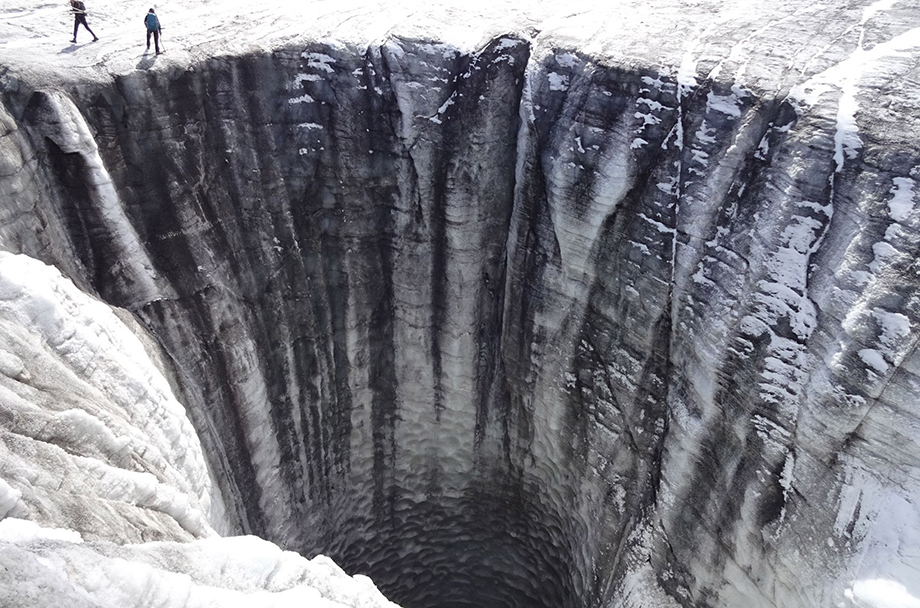
Ein Jahr der Extreme für Schweizer Gletscher
Im Hitzesommer 2018 verzeichneten die Gletscher massive Verluste. Ohne die riesigen Winter-Schneemengen wäre die Schmelze noch viel dramatischer ausgefallen.
-

Zum Klimabericht tragen viele bei
Anfang Oktober haben sich Mitglieder des europäischen Copernicus Erdbeobachtungsprogramms im Höhenforschungsobservatorium „Schneefernerhaus" auf der Zugspitze getroffen. Ihre Daten liefern wichtige Grundlagen für den Bericht des Weltklimarats IPCC. Mit dabei war Philipp Rastner vom Geographischen Institut und World Glacier Monitoring Service (WGMS).
-
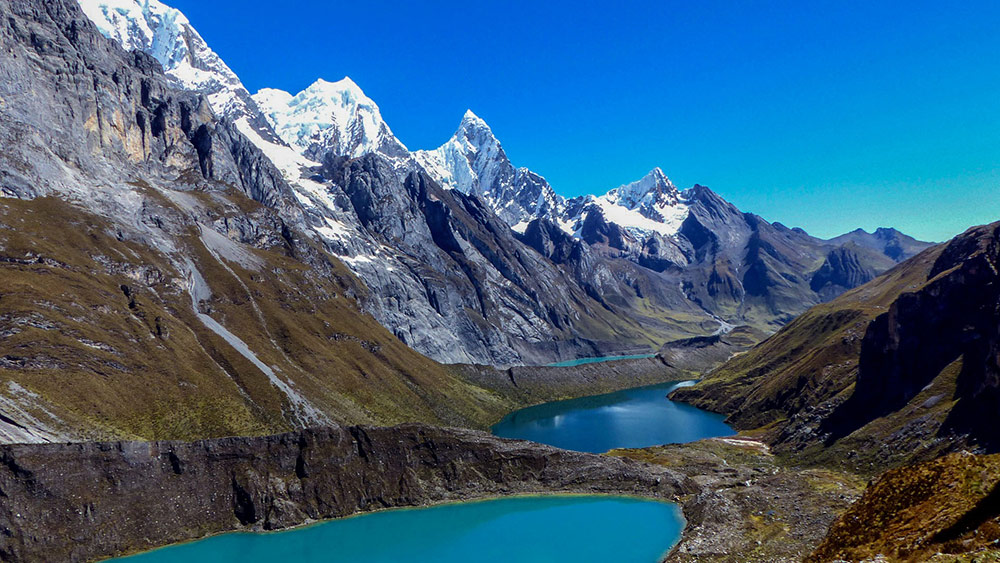
Gemeinsam globale Probleme angehen
Die Umwelt verändert sich und lässt etwa Gletscher schneller schmelzen. Dies zwingt den Menschen zur Anpassung. Doch wie? Antworten auf diese und weitere Fragen liefert ein von swissuniversities gefördertes SUDAC-Projekt unter der Leitung von Christian Huggel vom Geographischen Institut.
-
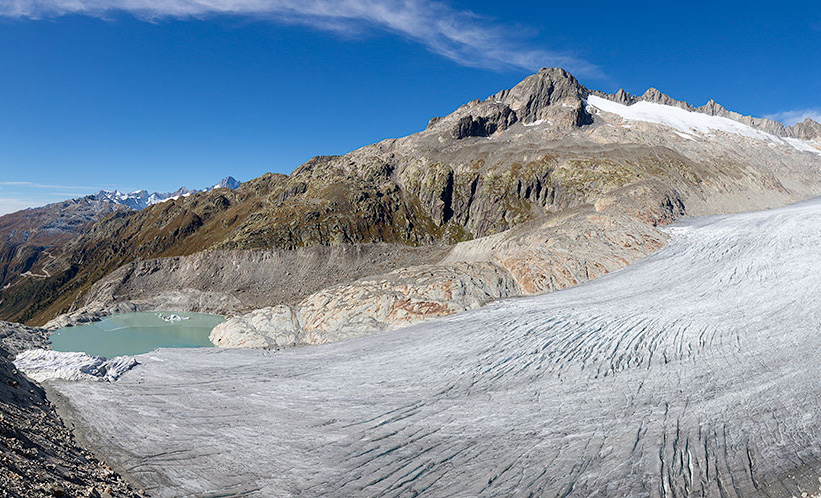
Scientists set out to explore microbial life in glacier streams
A team of scientists will spend at least the next four years studying some of the world’s biggest glacier-fed streams. By collecting microorganisms from the streams and extracting their DNA, they hope to better understand how these creatures have adapted to their extreme environments. Michael Zemp, a research associate at the Department of Geography, will provide his expertise in glaciology.
-

Die Alpenreise - Live aus Grindelwald
Der Grindelwaldgletscher war früher imposant, bis heute hat er sich aber stark zurückgezogen. Wanderung und Bericht mit Ausführungen von Samuel Nussbaumer, Glaziologe am Geographischen Institut.
-
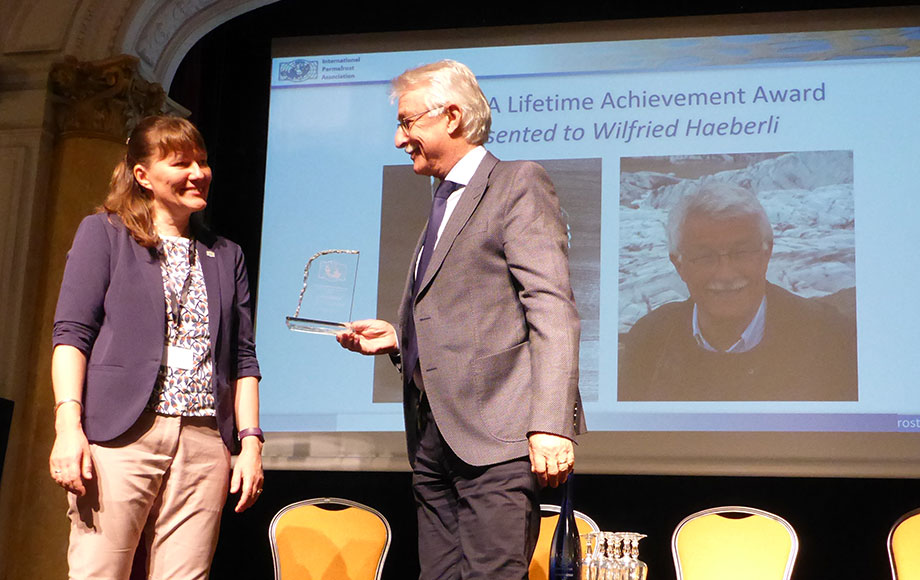
IPA Lifetime Achievement Award to Wilfried Haeberli
Last week Wilfried Haeberli received the Lifetime Achievement Award of the International Permafrost Association (IPA). The award was presented at the 5th European Permafrost Conference in Chamonix.
-
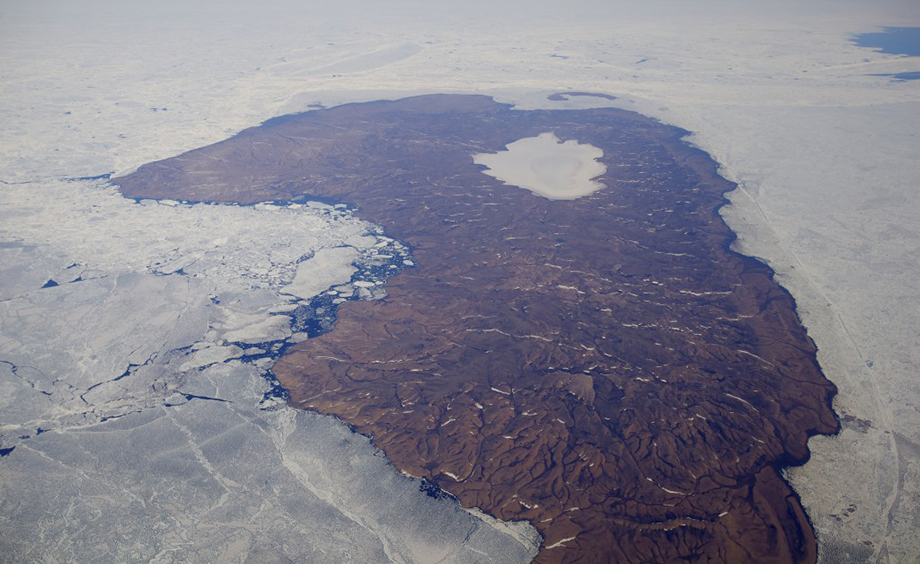
How the Alps inform polar research
At first glance, Switzerland might seem like an odd location for a summit on polar studies. But as a nation with high mountains, it is part of what researchers refer to as the “third pole” after North and South. This week the mountain resort of Davos welcomed 2,200 international scientists and decision makers for the POLAR2018 conference.
-
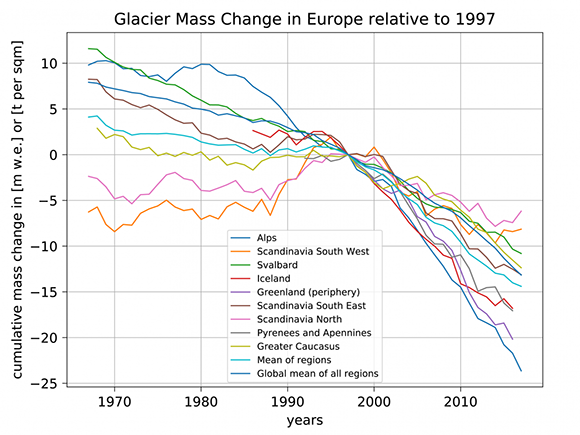
Towards an operational glacier monitoring service: Europe’s Copernicus Climate Change Service
A Blog post by Isabelle Gärtner-Roer on the contribution of the World Glacier Monitoring Service (WGMS) - located at the Department of Geography - to Europe’s Copernicus Climate Change Service.
-

WGMS contributed to European State of the Climate report
The first edition of the European State of the Climate report has been published and presented to the European Parliament in Brussels. The World Glacier Monitoring Service (WGMS) - located at the Department of Geography - contributed glacier data and analyses.
-
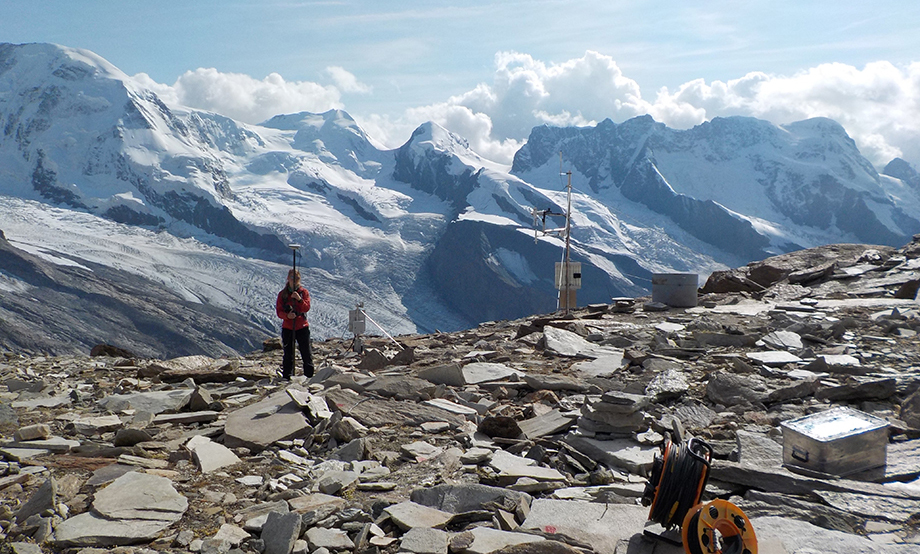
Short break in the warming of the alpine permafrost
For the first time since 2009, the warming trend of alpine permafrost was temporarily interrupted in debris slopes and rock glaciers. This is shown by the latest results of the Swiss permafrost measurement network (PERMOS), in which the 3G group is an active partner.
-

Frequently cited comment on glacier mass loss
In response to a study published in Nature Climate Change on glacier mass loss, GIUZ researcher Tobias Bolch was asked to comment on these results as an expert. His comments were taken up in numerous media articles, amongst others in the NZZ.
-
A tipping point for Greenland and its ice caps
Before 1997 the ice caps of Greenland remained stable. After 1997 this situation changed dramatically. Mass loss in the interior no longer compensated mass loss at the margins.
-
“Our object of interest is about to melt away”
The World Glacier Monitoring Service (WGMS) is looking back at more than a century of collecting data of glacier fluctuation worldwide in a new short film
-
Precipitation radar in the Peruvian Andes
For a better understanding of the impact of rain or snow on the Peruvian glaciers and water resources, an international team has installed a precipitation radar in the highlands of Peru.
-
Glacier change data as climate indicators
Changes in glaciers provide some of the clearest evidence of climate change. The latest global mass balance data indicate continued strong ice losses. Isabelle Gärtner-Roer explains the World Glacier Monitoring Service (WGMS), hosted at our Department, in a blog post of the World Data System (WDS).
-
Alpine permafrost continues to warm up
The trend of the warming alpine permafrost is unbroken. This is shown by the latest results of the Swiss Permafrost Measurement Network (PERMOS), of which our Department is a partner.
-
WGMS Jubilee
What the World Meteorological Organization (WMO) is for the weather, is the World Glacier Monitoring Service (WGMS) for glaciers. Today, the WGMS looks back at 30 years of achievements and future challenges at the University of Zurich with a public Symposium.
-
War waste in greenland
Climate change could remobilize abandoned hazardous Cold War-era waste believed to be buried forever beneath the Greenland Ice Sheet.
-
Rock glaciers crawl slowly down the slope
At the International Conference on Permafrost in Potsdam, Isabelle Gärtner-Roer explained the PERMASENSE network. Boeholes in rock glaciers allow to collect data on the temperature of the entire bore and therefore to explain the downward motion of the glacier.